Home automation system TAIYITO
In today's world, with incredible speed, automated control of various devices is being introduced into our lives to facilitate their operation and ensure ease of use. In this regard, intellectual home systems are gaining great popularity, designed to make life easier for ordinary people. “Smart Home” is a set of software and hardware tools that ensures the comfort of human life by automating daily processes. The same purpose is the design of the system, which will be the lowest cost of the coolant and, as a consequence, will be a savings in material resources. But the technologies of “Smart Homes” are still in the stage of rapid development, every year the global electronics giants eject more and more sophisticated and functional devices to the market, the data transfer protocols are improved, the concept and ideology of these systems is being processed. Several undergraduate students from our department recently presented their development in this technical field.
TAIYITO company has a wide range of various devices to ensure the automation of daily processes. Block diagram of devices:
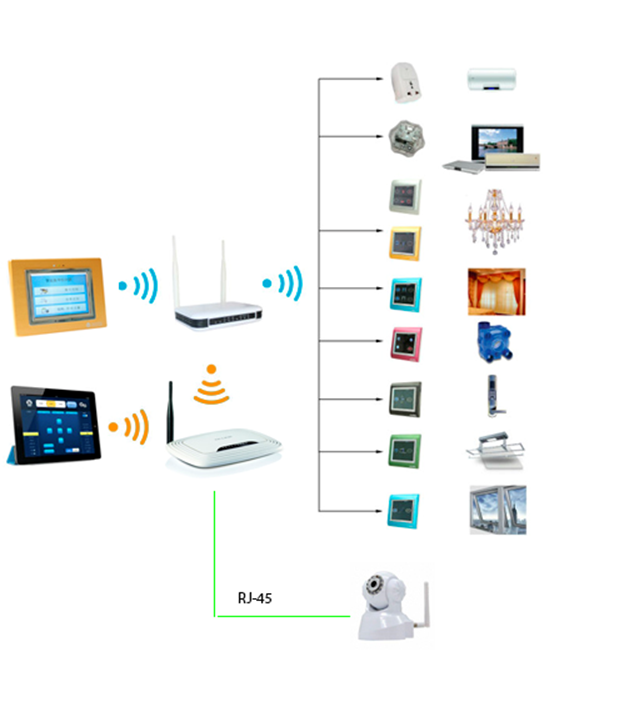
')
To begin, turn on the Taiyito TDWZ6617 ZigBee Control Server and use the computer to connect to the appeared access point HF-A11x_AP. Having connected, go to the browser at 10.10.100.254, enter the login / password (by default admin / admin) and get into a very ascetic web interface.

After that, proceed to the configuration described in the instructions that came with this device:
After completing the above steps, restart the server - Device Management Tab - Restart Module - click the Restart button. After that, it switches to the client mode of the local Wi-Fi network and the server mode for the ZigBEE network.
Now you can add all available devices to the network. To do this, we transfer the server to the “search network” mode: we press the Z button on the back of the device and hold it until the green LED with the designation “LED” blinks once; Then we clamp the same button until the red LED with the designation “DA” blinks. Now the server is waiting for new devices to connect.
After all devices are added, we can proceed to setting up the TYTSmart application that manages the entire system. To do this, we connect to the local network in which the server is located and run the application. After that, go to the Remote config tab and set the ip address and port of our server. Then go to the Password Settings tab and enter the password (123456 by default). We can divide the device into rooms and classrooms. In this case, we created the Bedroom Room and added the Taiyito TDZ4404S ZigBEE Touch Screen 2-Way Dimmer Switch to it:

Since this device does not work with the Zigbee protocol, therefore, the connection goes directly to the Wi-Fi router. The IP Camera Device Client program, shown below, is used to remotely control the camera.

As it interacted with this system, its shortcomings were highlighted: lack of sane documentation, lack of technical support, frequent application errors and crashes, both when working in iOS and in Android. Nevertheless, the advantages of the system were also noted: the possibility of integrating into ready-made systems, low cost, the availability of applications for most of the existing platforms
TAIYITO system
TAIYITO company has a wide range of various devices to ensure the automation of daily processes. Block diagram of devices:
Device list
- TP-LINK TL-WR741ND Wireless Router
- Taiyito TDWZ6617 ZigBee Control Server
- Taiyito TDZ4202S ZigBee Smart Socket
- Taiyito TDWZ6406 Touch Screen Wall Mount Centralized Controller
- Taiyito TDWZ6436 ZigBee 360 IR Transceiver
- Taiyito TDX6618H P2P Camera
- Taiyito TDZ4404S ZigBee Touch Screen 2-way Dimmer Switch
- Taiyito TDZ4405S ZigBee Touch Screen 3-way Switch
- Taiyito TDWZ6000S ZigBee Coordinator
Detailed description of each device
TP-LINK TL-WR741ND Wireless Router

Taiyito TDWZ6617 ZigBee Control Server
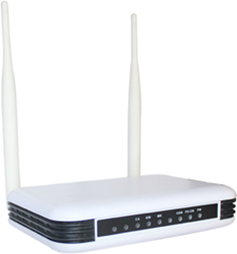
Taiyito TDZ4202S ZigBee Smart Socket
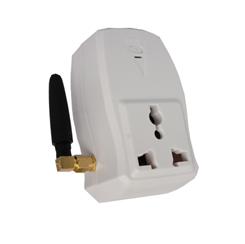
Taiyito TDWZ6406 Touch Screen Wall Mount Centralized Controller
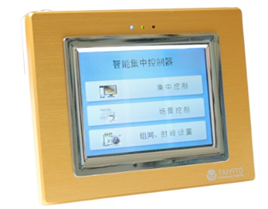
Taiyito TDWZ6436 ZigBee 360 IR Transceiver
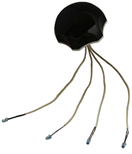
Taiyito TDX6618H P2P Camera

Taiyito TDZ4404S ZigBee Touch Screen 2-way Dimmer Switch

Taiyito TDZ4405S ZigBee Touch Screen 3-way Switch
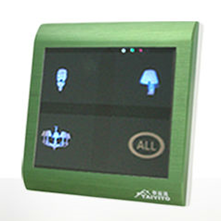
Taiyito TDWZ6000S ZigBee Coordinator

- Provides data transfer rates up to 150 Mbps
- CCA technology improves wireless network performance by automatically preventing channel conflicts
- WDS support for expanding your network
- One-touch QSS quick setup
- The priority function ensures the quality of sensitive applications such as video and calls over the network.
- SPI firewall support and access control
- Support WPA / WPA2 encryption
- Fully compatible with 802.11b / g / n compliant devices
Taiyito TDWZ6617 ZigBee Control Server
- ZigBee protocol: IEEE 802.15.4
- Transmission Frequency: 2.4 GHz
- Connects to the system via TCP / IP interface and Wi-Fi (802.11b / g / n)
- Voltage: AC 95-240V
- Frequency: 50-60Hz
- Interface: RS485, dry contact, ZigBee
- Dimensions: 157x108x35mm
- Antenna length: 170 mm
Taiyito TDZ4202S ZigBee Smart Socket
- ZigBee protocol: IEEE 802.15.4
- Grounding: Standard
- Rated voltage: 95V-240V
- Rated current: 3A
- Transmission Frequency: 2.4 GHz
- Operating voltage: AB 95-240V
Taiyito TDWZ6406 Touch Screen Wall Mount Centralized Controller
- ZigBee protocol: IEEE 802.15.4
- Operating voltage: 95-240 V 50-60 Hz
- Output power: 1500 W
- Front panel: 116-99-16 mm
- Back panel: 52-49-26 mm
Taiyito TDWZ6436 ZigBee 360 IR Transceiver
- ZigBee protocol: IEEE 802.15.4
- Operating voltage: 95-240 V 50-60 Hz
- Signal transmission frequency: 2.4 GHz
- IR signal frequency: 38 MHz
- Size: 95-95-50 mm
Taiyito TDX6618H P2P Camera
- Power supply: 5 V, 2 A
- Operating temperature range: -10 ~ 50 ° C
- Size: 200-120-179 mm
- Horizontal rotation angle: 355 °
- Vertical rotation angle: 90 °
- Image Resolution: VGA (640 * 480), QVGA (320 * 240)
Taiyito TDZ4404S ZigBee Touch Screen 2-way Dimmer Switch
- ZigBee protocol: IEEE 802.15.4
- Operating voltage: 95-240 V 50-60 Hz
- Signal transmission frequency: 2.4 GHz
- Front panel: 86-86-13 mm
- Back panel: 52-49-26 mm
- Operating temperature range: -10 ~ 50 ° C
Taiyito TDZ4405S ZigBee Touch Screen 3-way Switch
- ZigBee protocol: IEEE 802.15.4
- Operating voltage: 95-240 V 50-60 Hz
- Signal transmission frequency: 2.4 GHz
- Front panel: 86-86-13 mm
- Back panel: 52-49-26 mm
- Operating temperature range: -10 ~ 50 ° C
Taiyito TDWZ6000S ZigBee Coordinator
- ZigBee protocol: IEEE 802.15.4
- Voltage: DC 5V
- Connects to the system via ZigBee 2.4GHz, IR
- Transmission Frequency: 2.4 GHz
- Operating voltage: AB 95-240V
- Operating current: 450mA
- Working temperature: from-10 to 50 With
')
TAIYITO system setup
To begin, turn on the Taiyito TDWZ6617 ZigBee Control Server and use the computer to connect to the appeared access point HF-A11x_AP. Having connected, go to the browser at 10.10.100.254, enter the login / password (by default admin / admin) and get into a very ascetic web interface.
After that, proceed to the configuration described in the instructions that came with this device:
- Go to the tab Application Settings and then in the section Uart Settings we change the Baudrate parameter to 9600, the other parameters are left as default. Click Apply.
- Then in the Network Settings section, we change the port to 8899, the remaining parameters are left by default. Click Apply.
- Go to the STA Interface tab and in the WAN Connection Type combo box select STATIC (fixed ip).
- Then in the Static Mode section, enter the IP Address, Subnet Mask and Default Gateway sequentially. In our case, these are 192.168.0.236, 255.255.255.0 and 192.168.0.1, respectively.
- After that, in the STA Interface Parameters section, click the Search button and in the list that appears we find our router (in our case, TP-Link_BF3B82) check it and click Apply.
- Then in the same section, select the type of encryption (Security Mode) - WPA2PSK. Encryption Type - AES. Pass Phrase - the password used to access the router. Click Apply.
- The last item go to the Mode Selection tab and change the Wi-Fi mode to STA Mode. Click Apply.
After completing the above steps, restart the server - Device Management Tab - Restart Module - click the Restart button. After that, it switches to the client mode of the local Wi-Fi network and the server mode for the ZigBEE network.
Now you can add all available devices to the network. To do this, we transfer the server to the “search network” mode: we press the Z button on the back of the device and hold it until the green LED with the designation “LED” blinks once; Then we clamp the same button until the red LED with the designation “DA” blinks. Now the server is waiting for new devices to connect.
- Taiyito TDWZ6000S ZigBEE Coordinator;
Press the on / off button and wait for the red LED to blink 1 time, then the green LED will light up inside the case. This means that the device is added to the network. - Taiyito TDZ4202S ZigBEE Smart Socket;
Tuning is done in the same way as Taiyito TDWZ6000S ZigBEE Coordinator. - Taiyito TDWZ6406 ZigBEE Touch Screen Wall Mount Controller;
This touchpad works like a mobile app. With its help, you can create similar scenarios for managing existing devices. To connect it to the network, we go into the settings and press the start button. After that, the green LED will light up and the device will be added to the network. - Taiyito TDWZ6436 ZigBEE 360 IR Transceiver;
Press the left button once and the LEDs flash alternately, then press it again, and the green LED is on steadily. This means that the device is added to the network. - Taiyito TDZ4405S ZigBEE Touch Screen 3-way Switch
Hold the top 2 buttons until they blink. Then we hold down the left upper button until it blinks, and again the top two. After that, the second LED will turn green, which means the device has been added to our network.
After all devices are added, we can proceed to setting up the TYTSmart application that manages the entire system. To do this, we connect to the local network in which the server is located and run the application. After that, go to the Remote config tab and set the ip address and port of our server. Then go to the Password Settings tab and enter the password (123456 by default). We can divide the device into rooms and classrooms. In this case, we created the Bedroom Room and added the Taiyito TDZ4404S ZigBEE Touch Screen 2-Way Dimmer Switch to it:
Using Taiyito TDX6618H P2P Camera
Since this device does not work with the Zigbee protocol, therefore, the connection goes directly to the Wi-Fi router. The IP Camera Device Client program, shown below, is used to remotely control the camera.
Conclusion
As it interacted with this system, its shortcomings were highlighted: lack of sane documentation, lack of technical support, frequent application errors and crashes, both when working in iOS and in Android. Nevertheless, the advantages of the system were also noted: the possibility of integrating into ready-made systems, low cost, the availability of applications for most of the existing platforms
Source: https://habr.com/ru/post/246135/
All Articles